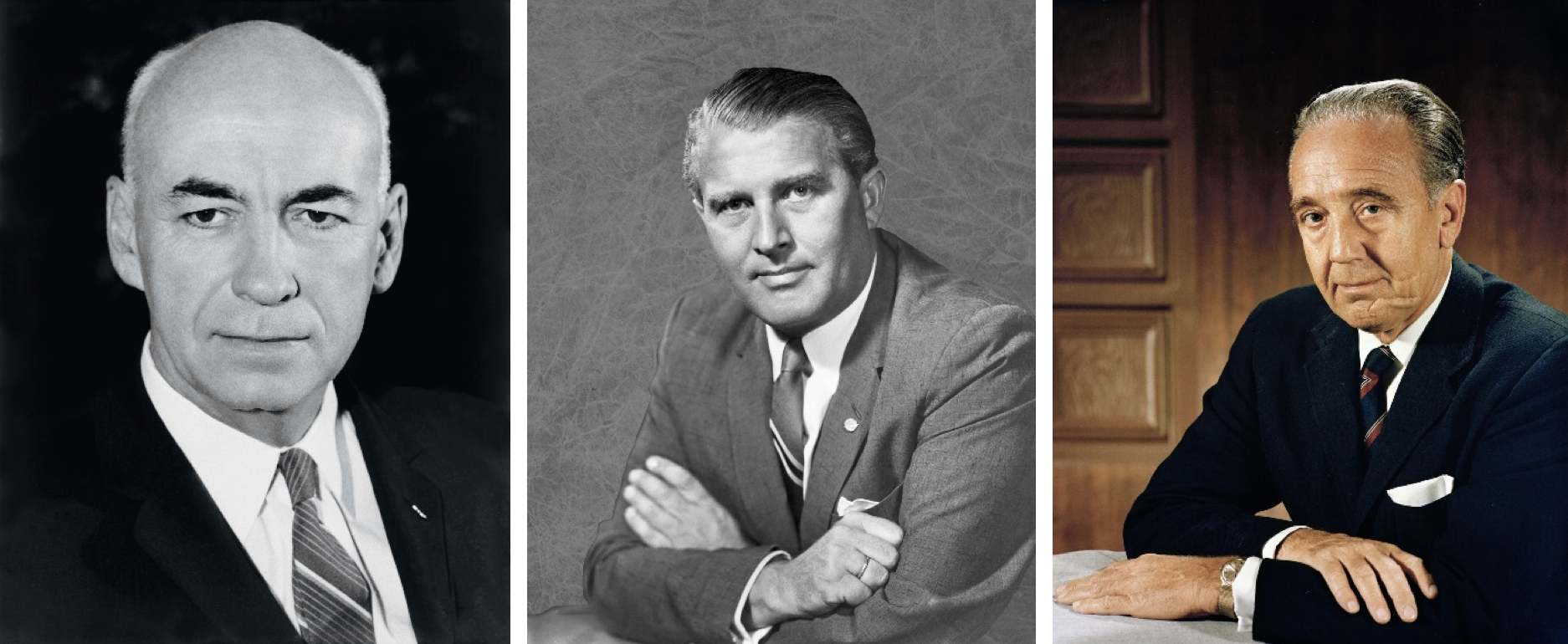Apollo Spacecraft Program Manager George M. Low had a bold idea: due to delays in the development of the Lunar Module (LM), he proposed sending the second crewed Apollo flight on a circumlunar mission. In meetings on Friday August 9, 1968, Low outlined his idea to key officials from the three NASA human space flight centers – the Manned Spacecraft Center (MSC), now the Johnson Space Center in Houston, the Marshall Space Flight Center (MSFC) in Huntsville, Alabama, and the Kennedy Space Center (KSC) in Florida. Everyone agreed that while achieving that goal would be challenging, they could not identify any technical showstoppers. The biggest challenge was to convince top management at NASA Headquarters, and they arranged a meeting there for the following week.
Representatives from MSC, MSFC and KSC attended the meeting in Washington, DC, on August 14, with NASA Deputy Administrator Thomas O. Paine and Apollo Program Director Samuel C. Phillips, the senior NASA Headquarters officials present. NASA Administrator James E. Webb and Associate Administrator for Manned Space Flight George E. Mueller were attending a conference in Vienna. The group discussed the feasibility of Low’s proposal and agreed that it was technically possible to accomplish a circumlunar flight with Apollo 8 in December. During the discussion, Mueller happened to call from Vienna and when they presented him with the proposal he was reticent, especially since NASA had yet to fly Apollo 7, the first crewed Apollo mission. He requested more information and more time to consider the proposal so he could properly brief Webb while the two were still at their conference.
Paine then polled each center for their overall assessment. Wernher von Braun, MSFC Director and designer of the Saturn V rocket, stated that since the decision had already been made to put a crew on this mission, whether it went to the Moon or stayed in Earth orbit didn’t matter too much. Director Kurt Debus stated that KSC could support a Saturn V launch in December – in fact the Apollo 8 Command and Service Modules had just arrived at KSC a few days earlier and the 3-stage Saturn V was already stacked in the Vehicle Assembly Building. Representatives from MSC, led by Director Robert L. Gilruth, agreed that this proposal was a key step in achieving President Kennedy’s goal of landing a man on the Moon before the end of the decade, and emphasized that the plan should be to enter lunar orbit and not just loop around the Moon. Since no LM would be flying on Apollo 8, they recommended replacing it with LM Test Article (LTA)-B as ballast to simulate loads on the Saturn V during launch. They also recommended swapping the crews for the next two missions, keeping the crew that had trained more extensively with a LM on that flight which would now become Apollo 9 and fly in early 1969.
Additional discussions were held later in the week, including with Administrator Webb, who agreed to plan for a December 6 launch, although for a lunar mission December 20 was a more suitable launch date. No formal decision about a lunar mission would be made until after a successful Apollo 7 flight in October, which would prove the space-worthiness of the Apollo Command and Service Module in Earth orbit. Until then, plans for a lunar mission were kept strictly within NASA. A formal announcement on August 19 stated only that the LM was no longer part of the Apollo 8 flight and that the agency was considering various mission objectives.
For more on the Apollo Program, please visit the JSC History Office page at https://historycollection.jsc.nasa.gov/JSCHistoryPortal/history/apollo.htm.





























